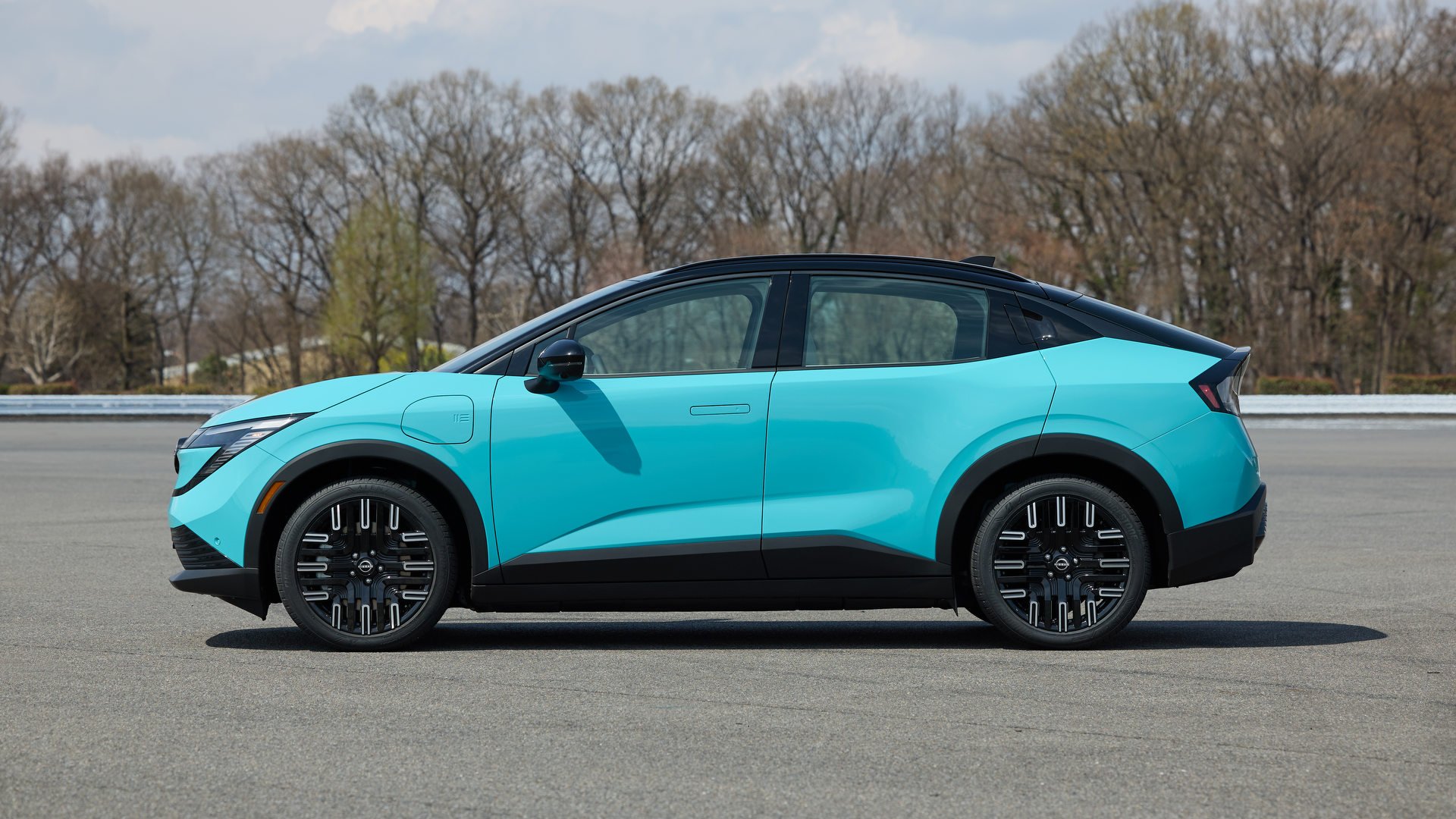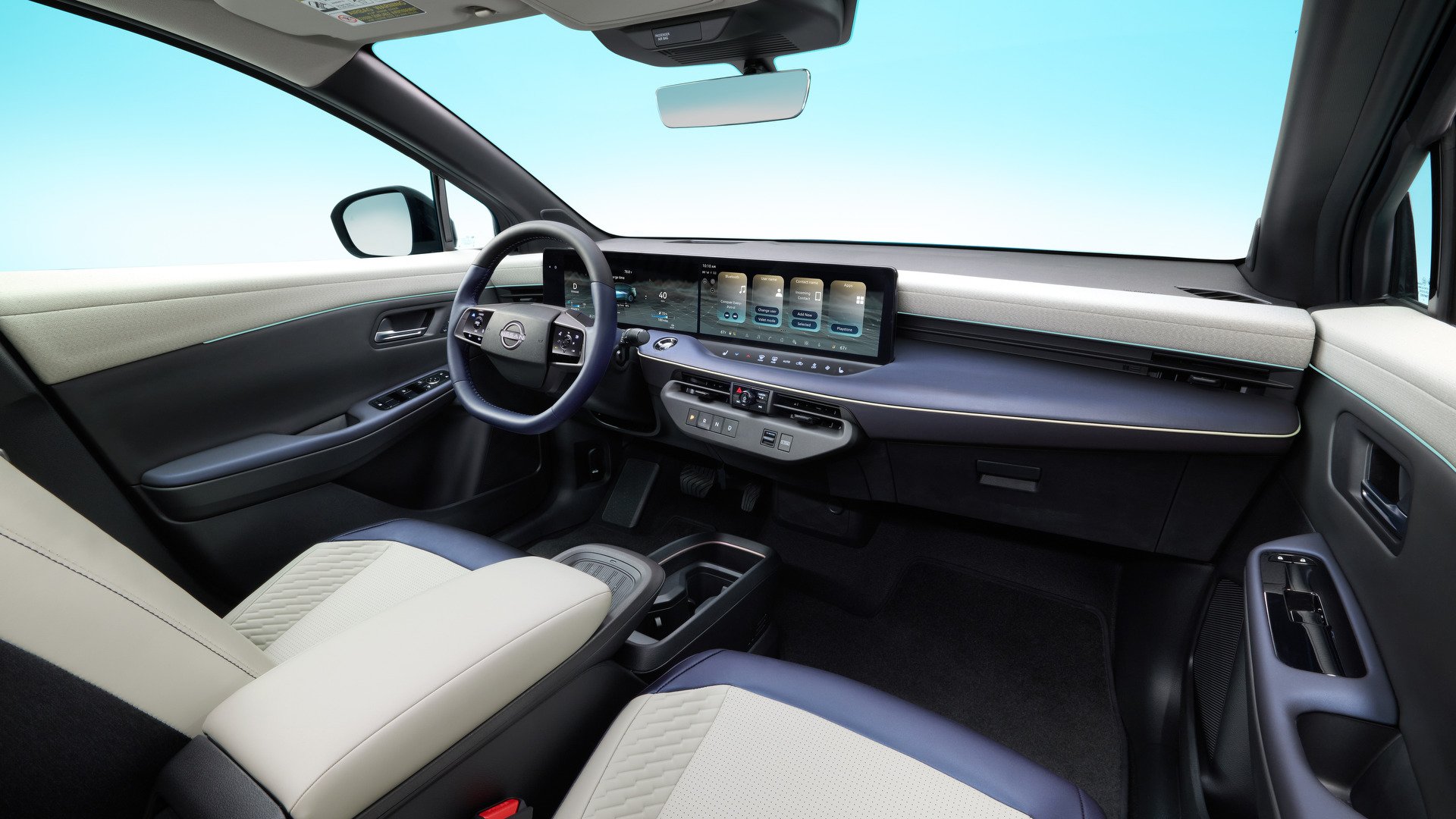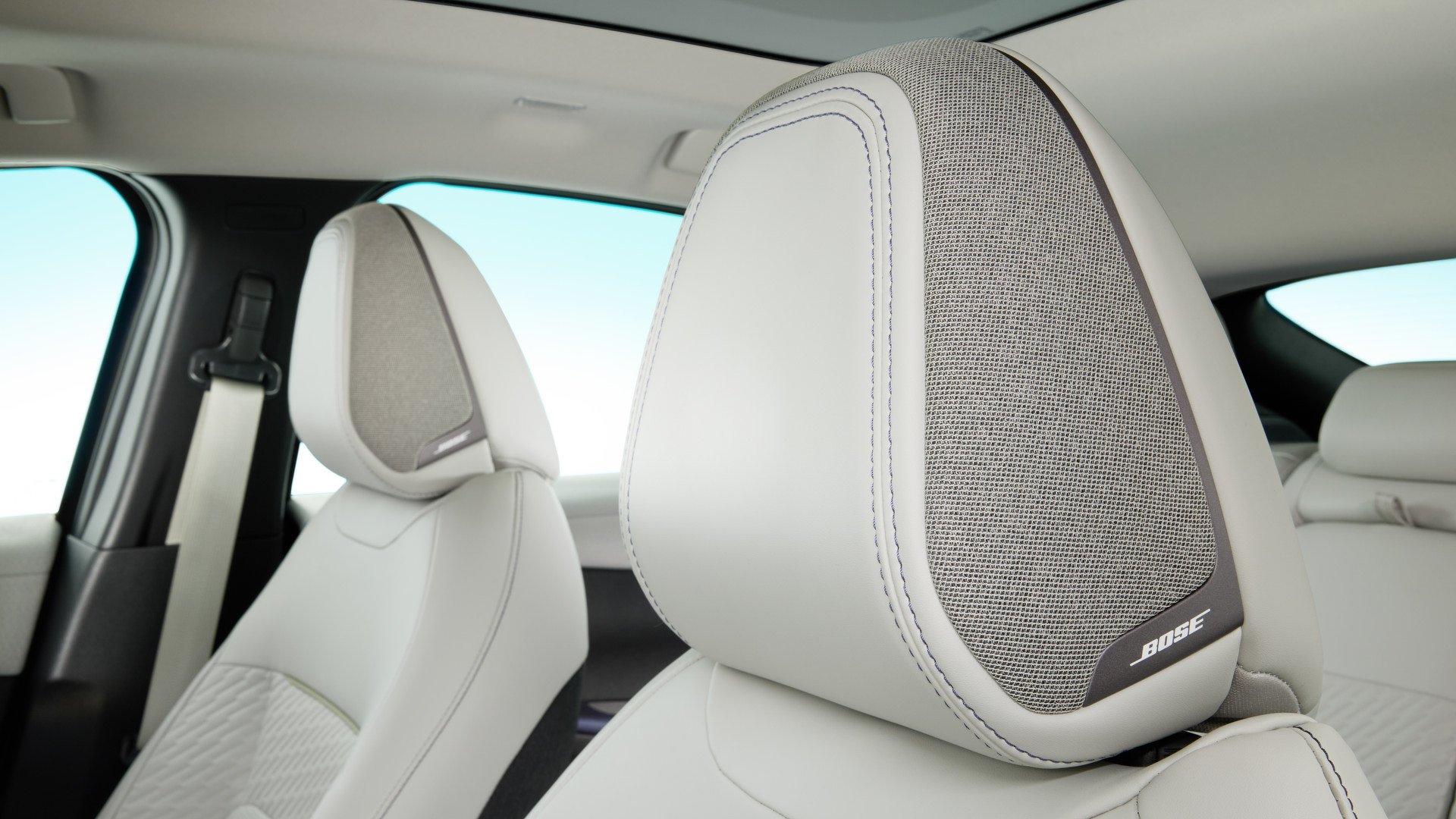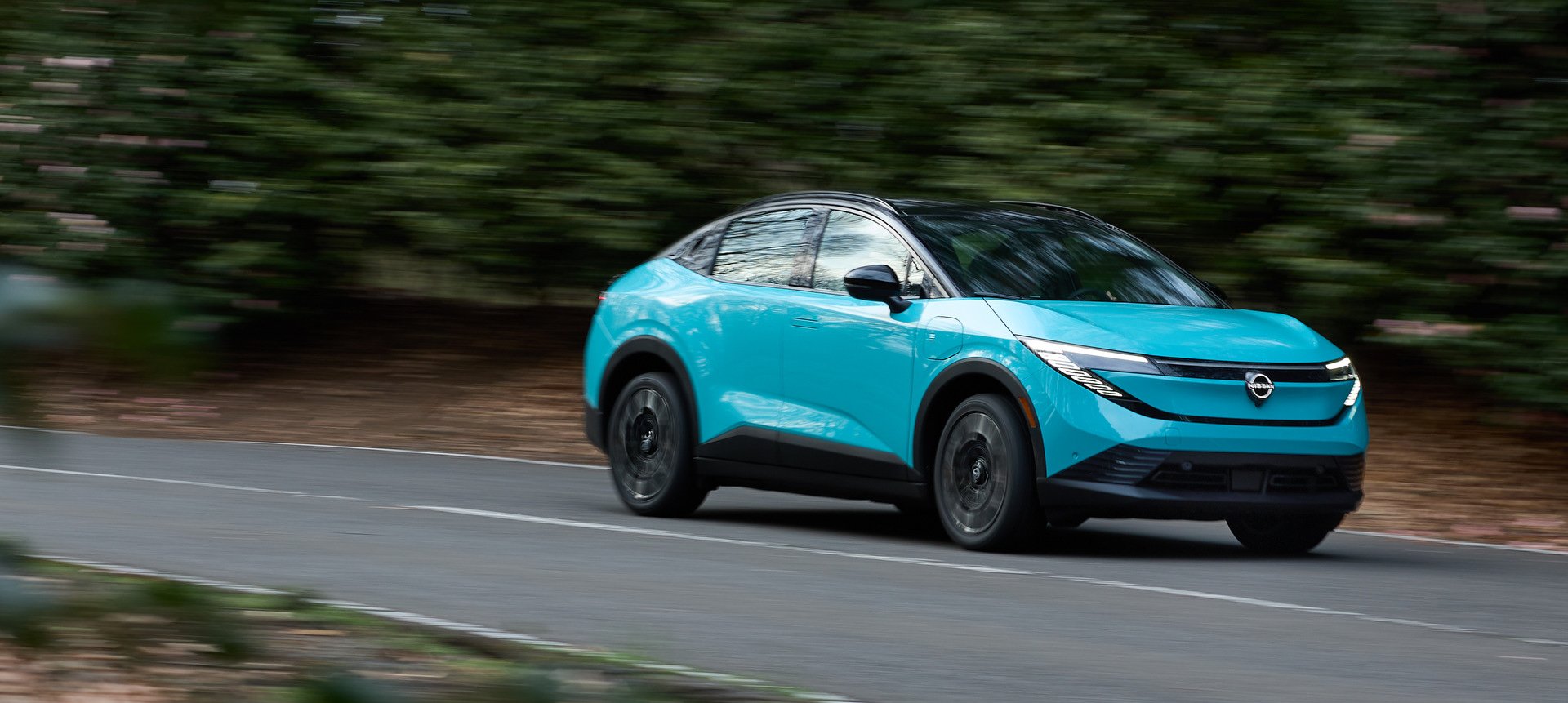2026 Nissan LEAF
2026 Nissan LEAF
After nearly two decades in continuous production, the LEAF has logged over 12 billion kilometres globally—more real-world electric driving data than virtually any other mass-market EV. Nissan used this accumulated knowledge to shape the 2026 model, addressing owner requests that surfaced repeatedly across markets: make charging easier, improve winter reliability, add more space. The result is a crossover that replaces the previous hatchback configuration. Range reaches an estimated 488 kilometres on the S+ grade, dual charging ports include NACS access for Tesla Supercharger compatibility, and cold-weather testing in northern Quebec validated battery thermal performance for Ottawa winters. This isn't a radical departure—it's a methodical update focused on removing the small annoyances that come up in daily EV ownership. The LEAF continues serving drivers who want electric transportation that simply works, without demanding lifestyle adjustments or steep learning curves.
What's new on the 2026 Nissan LEAF?
Exterior
Where the previous LEAF sat low like a traditional hatchback, the 2026 model stands taller as a compact crossover. The height increase brings practical benefits—easier entry, better sightlines, more upright seating—while aerodynamic work kept the drag coefficient at 0.26, down from 0.29 previously. Surfaces are intentionally simple, avoiding character lines that break up airflow. The front doors use motorized flush handles that retract when not needed, the first time Nissan has put this feature into production. Rear door handles hide in the C-pillar. A black grille panel holds the Nissan badge, optionally lit, with rectangular headlight stacks on either side and a full-width LED strip available across the front.
The roof curves back smoothly, and a thin blade trim runs along the beltline—a detail borrowed from the Z sports car. All glass sits flush with the body. The rear fenders flare upward toward the back glass, and a small spoiler on the liftgate angles at 45 degrees to manage airflow. Nissan embedded a "2-3" graphic motif (two rectangles, three rectangles) throughout the design—in the lights, the wheels, even subtle interior touches—as a nod to the Japanese pronunciation of the brand name. SV+ runs 18-inch alloys with that pattern; PLATINUM+ gets 19-inch wheels with a different spoke design. Eight exterior colours are offered, including Seabreeze Blue Pearl with black roof, Coulis Red Pearl with black roof, Everest White Pearl Tricoat with black roof, and Boulder Gray Pearl—all with black roofs—plus Deep Ocean Blue Pearl, Everest White, Gun Metallic, and Black Diamond Pearl.

Interior
The cabin feels noticeably roomier than the outgoing model. Engineers redesigned the front seats to carve out more knee space for second-row passengers—a change Canadian families requested frequently. Moving the shift controls up to the dash let Nissan narrow the centre console significantly, opening up the middle of the cabin. There's no transmission tunnel, so the floor is flat front to back. S and S+ grades get cloth seats; SV+ and PLATINUM+ use TailorFit synthetic material. PLATINUM+ adds 64-colour ambient lighting you can adjust to match your mood or just turn off entirely.
The optional panoramic roof is unlike anything else in this segment. Instead of a traditional moonroof that slides open, this one uses special glass that electrically dims from clear to nearly opaque. Press a button, and it darkens to block sun and heat; press again, and it clears. It saves headroom, improves aerodynamics compared to a mechanical roof, and frankly, it's satisfying to watch it change. The higher seating position makes getting in and out easier, especially in winter when there's snow piled around the doors—a regular occurrence in Ottawa. Behind the second row, there's 55.5 cubic feet of cargo space. An optional Divide-N-Hide system creates a hidden storage bin under the floor, or you can remove it completely for maximum volume. Basics like cupholders, bottle holders, a glove box, rear defroster, and automatic climate control with rear vents come standard across the board.

Technology

Entertainment
S and S+ grades get dual 12.3-inch screens; SV+ and PLATINUM+ upgrade to 14.3-inch displays. The larger screens come with Google built-in, meaning Google Maps, Google Assistant, and the Play Store run natively in the vehicle. Google Maps does more than basic navigation—it plans charging stops based on your battery level and destination, and predicts how much charge you'll have when you arrive. Every LEAF includes wireless Apple CarPlay and wireless Android Auto. Audio setups vary: 4 speakers on S and S+, 6 on SV+, and a 10-speaker Bose Personal Plus system on PLATINUM+. The Bose system puts speakers in the front headrests, so you can route phone calls or nav directions to just the driver without bothering passengers.

Safety
Nissan Safety Shield 360 is standard and includes the basics: Automatic Emergency Braking with Pedestrian and Cyclist Detection, Rear Cross Traffic Alert, Lane Departure Warning and Prevention, Blind Spot Warning and Intervention, and Forward Collision Warning. ProPILOT Assist—adaptive cruise with lane centering—also comes standard. It's useful on the Queensway or Highway 417 when traffic is moving steadily. Starting at S+, you get a 3D Around View Monitor with eight camera angles for parking and tight manoeuvres. Front Wide View gives you a wide-angle look forward and to the sides, helpful when pulling out of parking spots with cars blocking your view. Invisible Hood View uses cameras to show you what's directly in front of and under the vehicle—useful for spotting curbs or those concrete parking blocks. PLATINUM+ adds a head-up display and front parking sensors to go with the standard rear sensors.
Powertrain
A smaller 53-kWh battery with a 130-kW (174-horsepower) motor will arrive later—Nissan says spring 2026—for buyers who don't need maximum range or want to save some money. Two charge ports give you flexibility. The J1772 port on the driver's side works with home chargers and most public Level 2 stations. The NACS port on the passenger side plugs into Tesla Superchargers and other fast chargers adopting that standard. Through the MyNISSAN app, you can access the NISSAN Energy Charge Network, which includes over 25,000 public chargers across Canada. The app shows availability in real time and handles payment. Plug & Charge is also available—at compatible stations, you just plug in and charging starts automatically. No apps, no cards, no extra steps.

Versions
Frequently Asked Questions about the 2026 Nissan LEAF
Inquire about the LEAF

